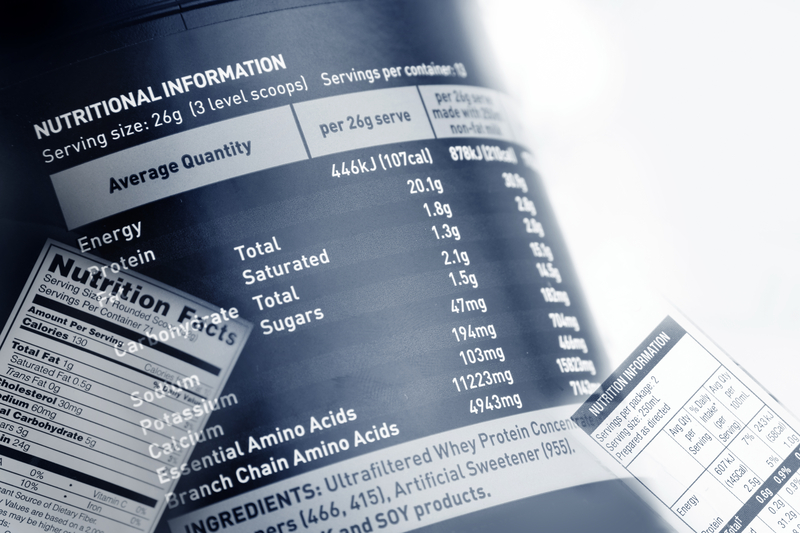Navigating Food Labels: Decoding Nutritional Information
In today’s world of endless food choices, understanding how to decipher food labels is crucial for making informed decisions about what we consume. Food labels provide a wealth of information, allowing us to understand the nutritional content of products and make choices that align with our health and wellness goals. In this comprehensive guide, we will dive deep into the intricacies of food labels, exploring the key components such as serving size, ingredient lists, and nutritional values. Get ready to embark on a journey of unraveling food labels and gain the knowledge and confidence to make informed choices that support your well-being.
Cracking the Code: Serving Size and Servings per Container: The serving size is the recommended amount of a food product typically consumed at one time. It sets the foundation for understanding the nutritional content and values listed on the label. However, it’s important to note that serving sizes may vary from person to person based on individual needs and preferences. Paying attention to the serving size is crucial for accurately assessing the quantities of nutrients you are consuming. Be mindful of portion sizes and consider how they align with your dietary needs and goals. Additionally, check the number of servings per container to ensure you have a clear understanding of the total amount of food in the package.
Demystifying the Ingredients List: The ingredients list provides valuable insights into the composition of a food product. It is crucial to review the ingredients list to understand what exactly is in the product you are considering. Ingredients are typically listed in descending order by weight, meaning the first few ingredients are the most abundant in the product. Look for recognizable, whole food ingredients such as fruits, vegetables, whole grains, and lean proteins. Be cautious of additives, preservatives, and artificial substances that may be listed under various names. Opt for products with shorter, simpler ingredient lists as they are often indicative of less processed and healthier options.
Understanding Nutritional Values: The nutritional values section provides detailed information about the content of various nutrients in a food product. Familiarize yourself with the nutrients of interest, such as carbohydrates, proteins, fats, fiber, vitamins, and minerals. Pay close attention to the quantities of these nutrients per serving and how they fit into your overall dietary needs. Be mindful of macronutrients that may be restricted in certain diets, such as saturated fats, added sugars, and sodium. Use the nutritional values to make comparisons between products and select options that align with your dietary preferences and goals. Additionally, be aware of the serving size used to calculate the nutritional values, as it may differ from the portion you typically consume.
Deciphering Health Claims and Marketing Jargon: Food labels often feature health claims and marketing jargon designed to attract consumers. However, it’s important to approach these claims with a critical eye and understand their true meaning. Some claims may be regulated, while others may be purely marketing tactics. Look for substantiated claims backed by scientific evidence, such as “high in fiber” or “excellent source of vitamin C.” Be cautious of vague or exaggerated statements that may mislead consumers. Terms like “low-fat,” “all-natural,” or “sugar-free” can be misleading, as they do not necessarily indicate a healthier choice. Always refer to the nutritional values and ingredient lists to make informed decisions based on facts rather than marketing tactics.
Navigating Food Labels for Special Dietary Needs: If you have specific dietary needs or restrictions, such as food allergies, intolerances, or lifestyle choices, reading food labels becomes even more crucial. Familiarize yourself with allergen labeling requirements and carefully scan ingredient lists for potential allergens. Common allergens, such as peanuts, tree nuts, soy, wheat, milk, eggs, and shellfish, are often clearly identified in bold or highlighted text. Look for specific labels indicating gluten-free, vegan, or other dietary attributes that align with your needs. If you are following a specific diet plan or have medical dietary requirements, consult with a healthcare professional or a registered dietitian for personalized guidance on reading food labels.
Decoding food labels is an essential skill that empowers you to make informed choices about the foods you consume. By understanding the serving size, ingredient lists, and nutritional values, you can confidently select products that align with your health and wellness goals. Pay attention to the serving size and servings per container, review ingredient lists for whole, recognizable foods, and utilize the nutritional values to make comparisons and informed decisions. Approach health claims and marketing jargon with skepticism, relying on the factual information provided on the label. Navigating food labels allows you to take control of your dietary choices and prioritize foods that nourish your body and support your overall well-being.



